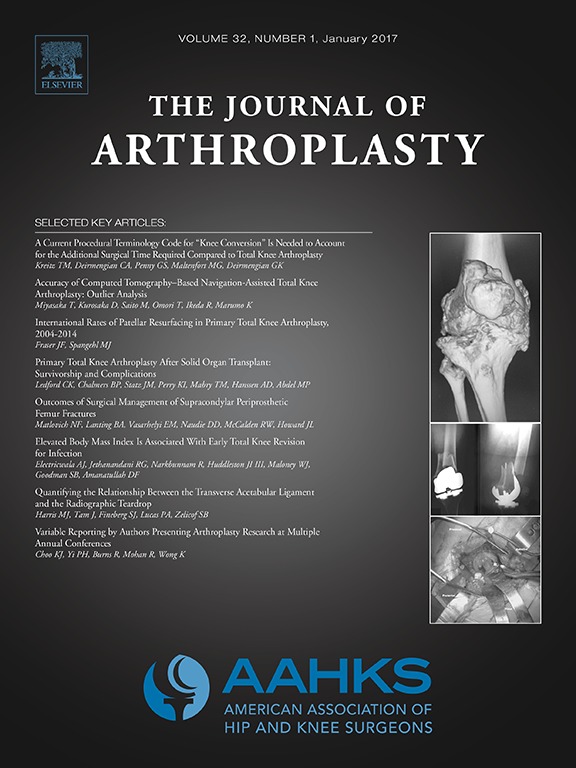
Arthroplasty
Similar dynamic stability and function with AS-TKA and PS-TKA in patients with knee osteoarthritis
J Arthroplasty. 2019 Aug;34(8):1682-1689.Fifty patients (100 knees) were randomized to receive both an anterior-stabilized (AS) implant and posterior-stabilized (PS) implant for use in a same-day bilateral total knee arthroplasty (TKA) procedure. The primary outcome of interest was anteroposterior (AP) stability, measured radiographically for static AP stability and with one-leg standing lateral fluoroscopic imaging for dynamic AP stability. Additional outcomes of interest included the Knee Society Score (pain, function, total) and the Western Ontario and McMaster University Osteoarthritis (WOMAC) index (pain, stiffness, function, total), femorotibial angle, flexion contracture, range of motion, polyethylene insert thickness, and femoral rollback. Results revealed significant differences in posterior displacement and static AP laxity between the AS-TKA and PS-TKA groups. Furthermore, femoral rollback was significantly inferior in the AS-TKA group compared to the PS-TKA group. No significant differences in KSS or WOMAC scores, tibial displacement (at 30, 60 and 90 degrees of knee flexion), femorotibial angle, flexion contracture, range of motion or polyethylene insert thickness were observed between the two groups.
Unlock the full article
Get unlimited access to OrthoEvidence with a free trial
Start TrialCritical appraisals of the latest, high-impact randomized controlled trials and systematic reviews in orthopaedics
Access to OrthoEvidence podcast content, including collaborations with the Journal of Bone and Joint Surgery, interviews with internationally recognized surgeons, and roundtable discussions on orthopaedic news and topics
Subscription to The Pulse, a twice-weekly evidence-based newsletter designed to help you make better clinical decisions
Exclusive access to original content articles, including in-house systematic reviews, and articles on health research methods and hot orthopaedic topics
Or continue reading this full article
Register Now

Subscribe to "The Pulse"
Evidence-Based Orthopaedics direct to your inbox.




































